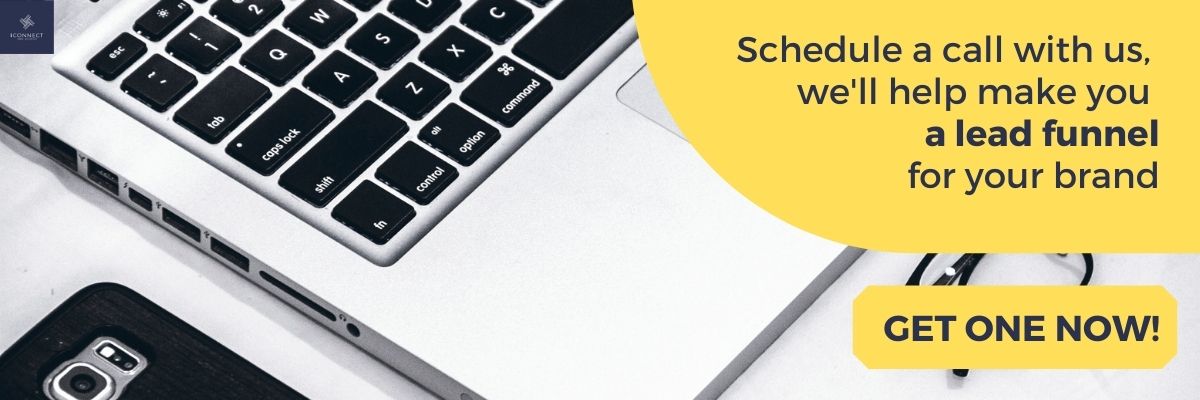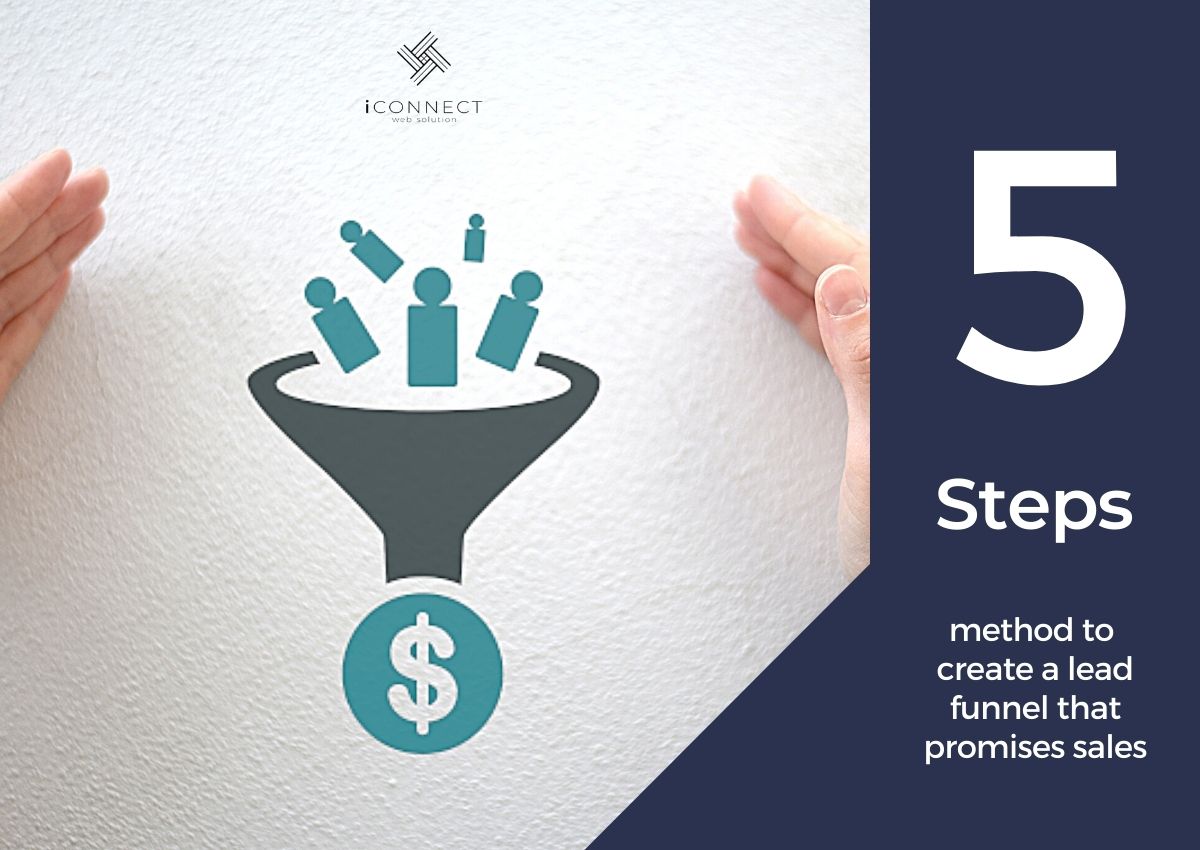

Today, we will teach you the basics of the lead funnel and how to build one to grow your sales – and, ultimately, your business.


What is a Lead?
Each business has its definition and identification of a lead. In simple words, a lead is a prospective customer. They are the people who show interest in your business and what it offers. They hand you their contact information as an initiative to learn about the product/service you offer. In marketing terms, leads are also known as prospects.
What is Lead Funnel?
Leads funnel the journey that a prospect experiences in the process of becoming a client. It is a systematic method to generate leads for your business. A lead funnel is mainly designed and implemented by a marketing and sales team.
Explaining Leads Funnel
Businesses have to advertise their products and services to many. Still, only a tiny amount gives precise contact information and turns into a lead. Out of those leads, just a tiny percentage will move toward becoming customers. Only 10-15% of leads convert into sales (Source: Belkins).
Why do we call it a lead funnel? It would help if you funnelled down the leads with the end goal to turn them into new customers. But actually, it is the fact that it is narrow towards the bottom and wide on the top. At the top of the funnel, your potential audience and leads are placed, while as you move towards the bottom, only the committed leads are left. The primary purpose of a leads funnel is to turn the potential leads into committed consumers. The funnel is divided into different stages.
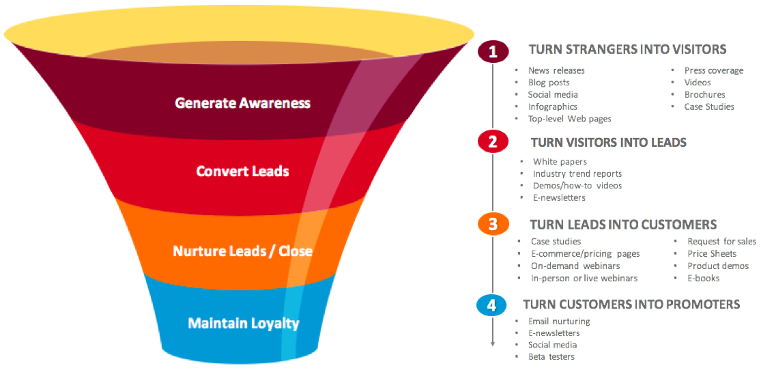

Image Credits: Trew Marketing
Stages of Lead Generation Funnel
The stages of a lead generation funnel depend on various factors, so they vary by business. But generally, they are separated into four sections.
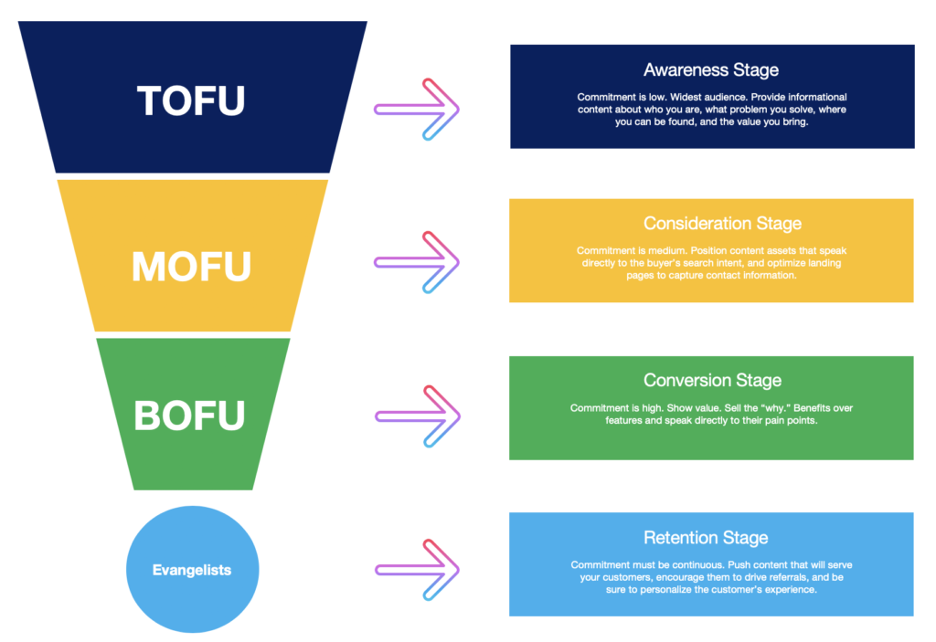

Image Credits: Suttida Yang
1. Awareness
In this stage, you spread awareness about your business to prospects through marketing. Prospects represent everyone in the world who would be a good fit for your business – for the content, services, or product you provide.
2. Interest/Lead Capture
This is where the lead generation process begins. At this stage, the prospects have initial contact with your funnel and where they decide to show interest and interact with your business. For example, filling out a form, signing up for an email list, etc. Then a salesperson or representative from your business will follow up on the lead and gauge their interest further.
3. Offer/Decision Stage
In this stage, you offer your product/service to the lead to solve their problem. Then the lead decides whether to buy it or not.
4. Action
In the final stage of a lead funnel, the lead takes action and buys your product/service, turning into a paying customer. Effective leads should include all the stages. First, they should be placed correctly to work for the product or service your business offers.
Why Is A Lead Funnel Important?
Lead funnel is an important sales and marketing tool because:
● Helps analyze audience and set up the best communication channels
● Identifies any ineffective strategies and loose ends that are not working for the business
● It helps you organize and streamline your marketing efforts
● Allows the lead generation, lead nurturing, and sales to work in harmony
● Allows you to convert leads into paying customers
How to Build a Lead Generation Funnel?
Here are five simple steps to build an effective lead funnel for your business:
Step 1. Understand Your Customer Journey
Understanding your customer’s journey is what allows you to design and implement an effective lead generation strategy. Study the audience, know what they like, what they will respond to, and what will drive them to take action.
Conduct surveys, interviews, and market research to learn about your target audience. Using tools like Google Analytics gives you real data like traffic reports, funnels, conversion rates, and bounce rates. The statistics on these tools give you an insight into where you need to improve. Thus, allowing you to improve your website.
Step 2. Create Interactive Content
As Google said, “Content is King.” All your marketing efforts will fail if they lack high-quality, engaging content. You need to create interactive content to get your prospect’s attention. Blog posts, podcasts, videos, eBooks, social media posts are all examples of content that connect with your customer. Also, make sure your content is SEO-friendly. Optimizing your content will result in more views and lead to a wider reach.
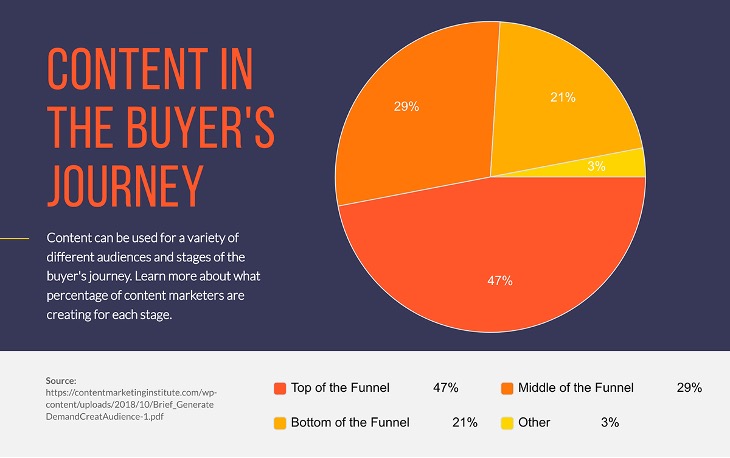

Image Credits: Visme
Step 3. Drive Traffic
Content is useless if it is not being consumed. Drive traffic to your content through organic SEO practices that match the audience’s intent. For example, you upload a stellar product video, but the webpage takes forever to load. This lag in load time just cost you a lead. Did you know: 50% of visitors leave a website that takes more than three seconds to load (Source: Website Setup)
So, improve your website, implement on-page and off-page SEO, use social media marketing and drive traffic to your website!
Step 4. Collect Prospect Information
Of course, you will need to contact a prospect, and for that, you must have their contact details. So, create a way to collect visitor information on your website, such as surveys, newsletter sign-ups, etc. The typical way to do so is by a lead magnet. A lead magnet is something you give to the visitors for free in exchange for their information like email.
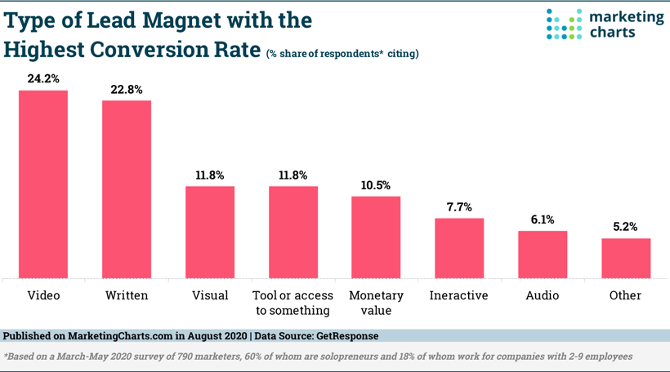

Image Credits: Marketing Charts
Step 5. Close The Sale
Now that you know how to contact your lead get them to buy your product/service. Train your sales team to close the sale and value your customer.
Summing Up
Using the 5-step method mentioned above, you can create a lead funnel that promises sales. Each step requires thorough research, strategizing, and implementation to create a custom lead funnel that will work for your business!

